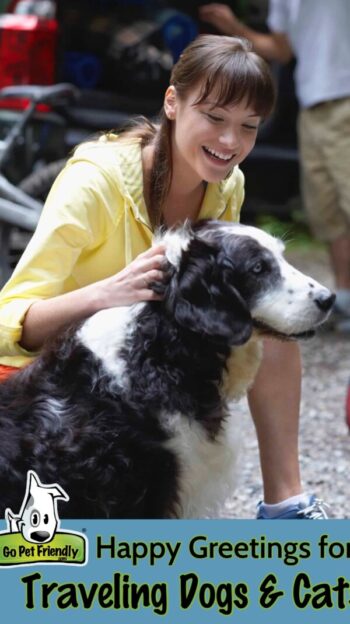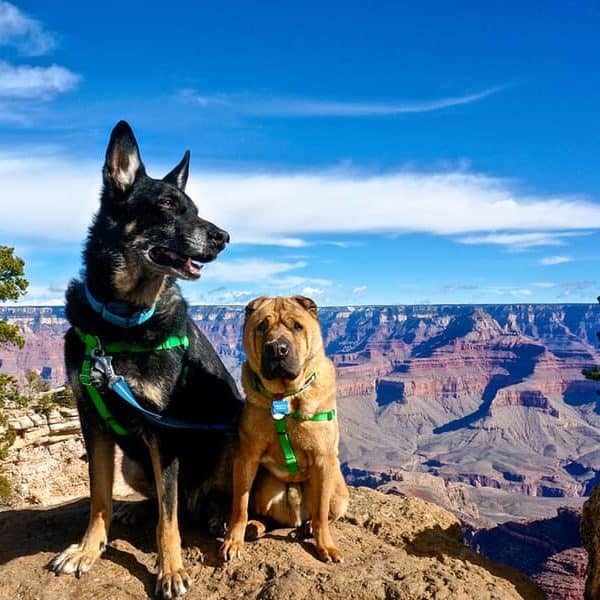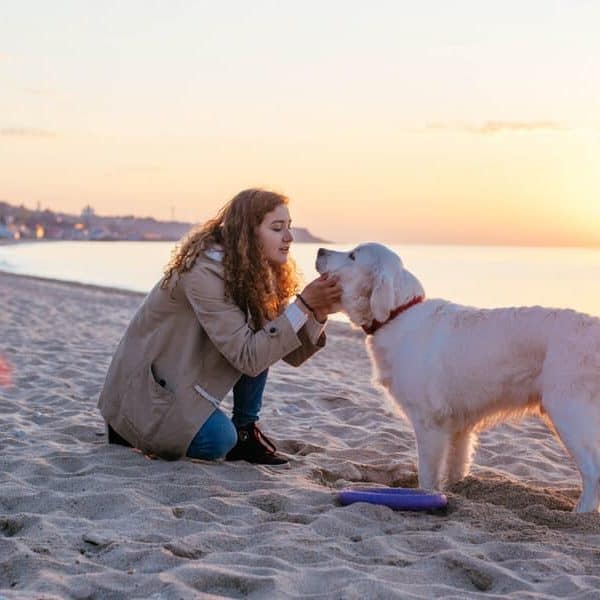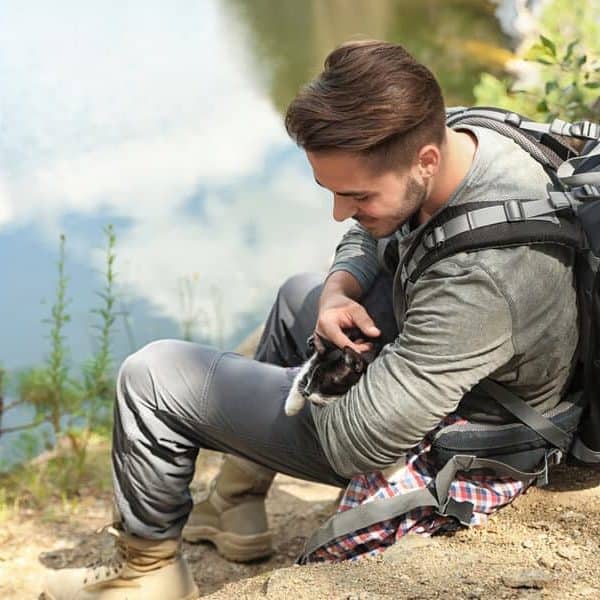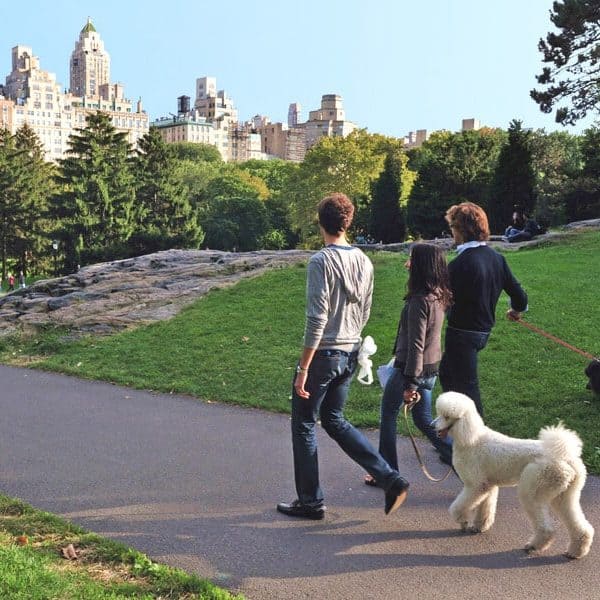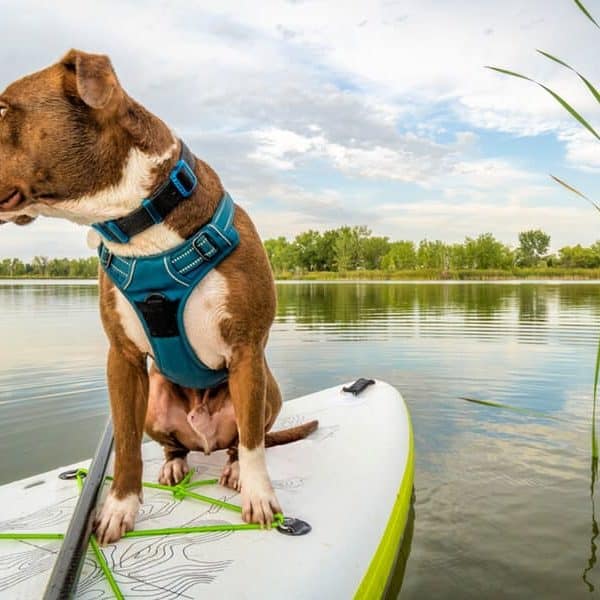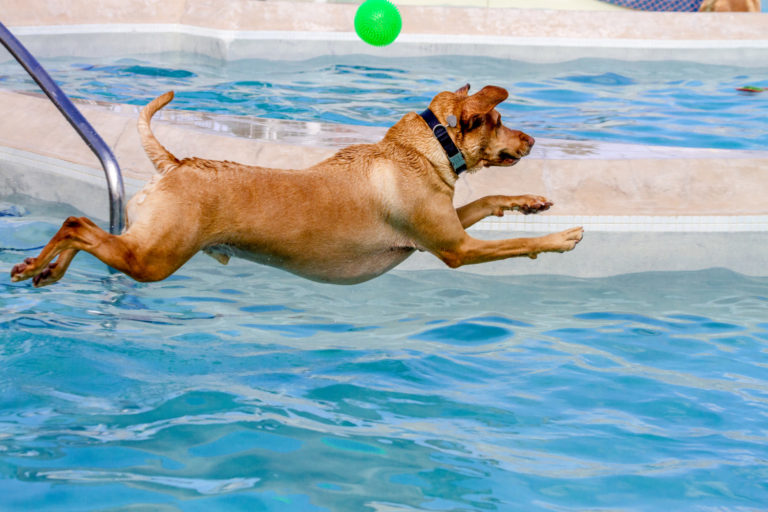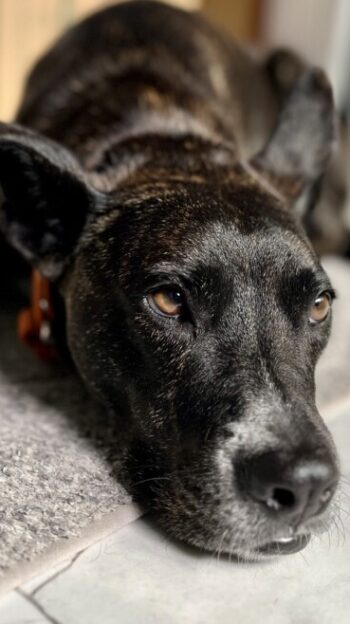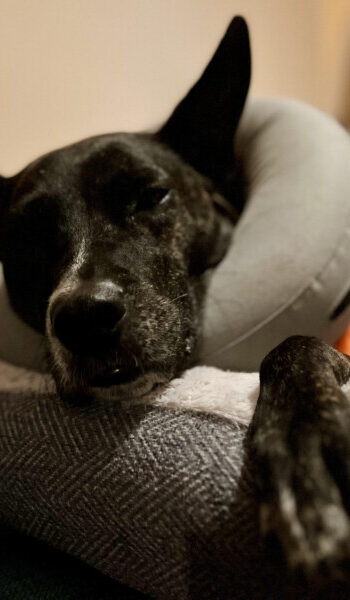If you travel with your dog or cat, people will want to meet them. But how do you handle greetings with pets so everyone is happy? Here are a few guidelines that will help—whether your pet is greeting adults, kids, other dogs, or cats.
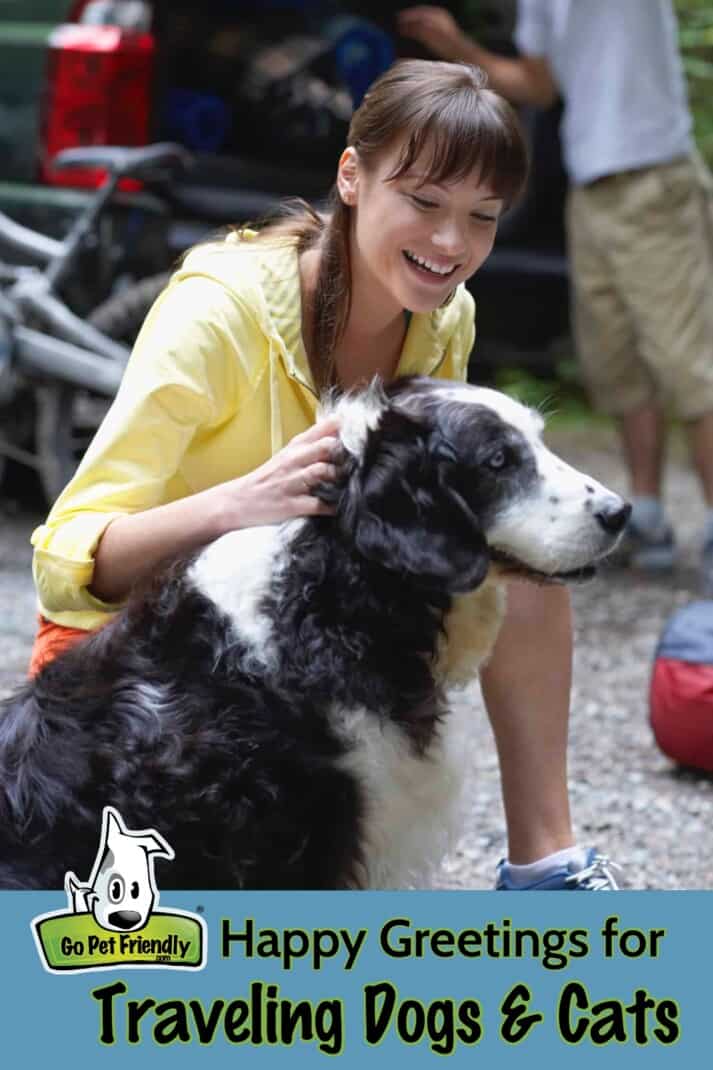
How To Ensure Happy Greetings With Pets When Traveling
If you only travel in remote areas, you may not have to manage greetings with pets and others. But just try visiting dog-loving Charleston, St. Augustine, or Carmel-by-the-Sea. Tons of people will ask you, “Can I pet your dog?”
We heard it frequently when traveling with our gregarious golden retriever, Honey. And I’ve come up with a few guidelines depending on who Honey is greeting.
Introducing A Dog To Adults
Surprisingly, we have the most trouble with adults who want to meet Honey. We see plenty of adults who:
- offer food to her without asking us first
- encourage bad behavior by their actions
- force their attention on her even when it’s not wanted
When I give Honey a treat, she knows that I expect her to lie down and remain calm. If she isn’t calm she doesn’t get a treat.
We’ve had strangers wave a treat around Honey’s nose, hold it up in the air (encouraging her to jump), and then act miffed that she’s so excitable. As a result, I no longer allow strangers to give treats to my dog—no matter how much they beg me (and they do beg me).
READ MORE ⇒ 11 Tips To Help You Greet A Strange Dog
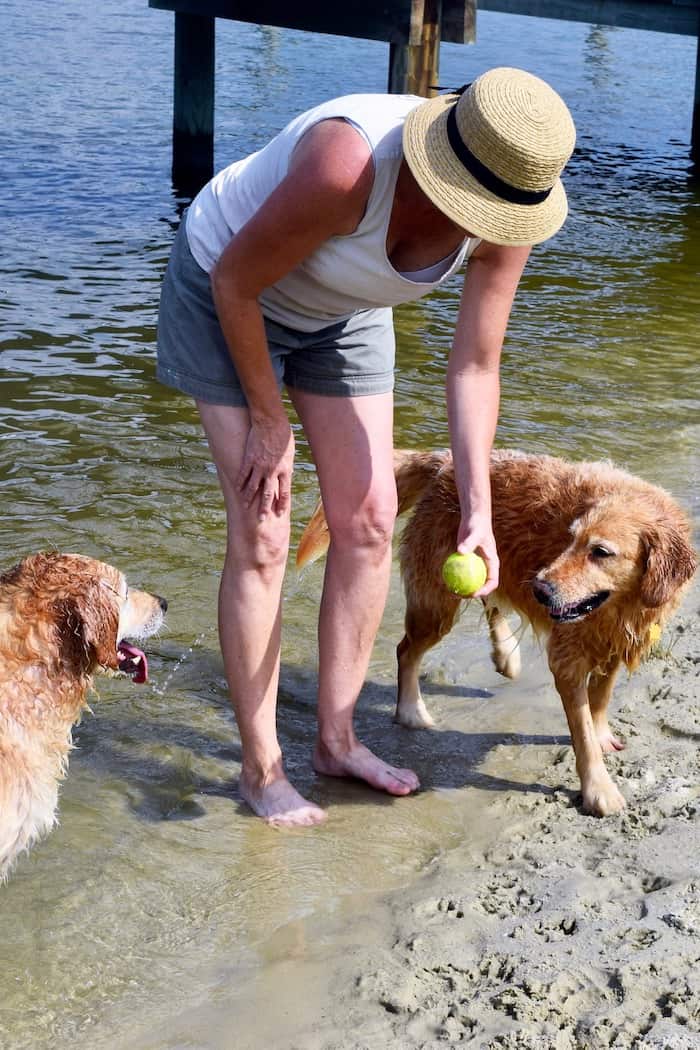
It’s not worth a setback in my dog’s training because some stranger wants to give her a biscuit. Even more, I don’t want my heavy-enough-to-knock-someone-over dog to accidentally hurt a person holding a treat up over their head and asking her to “jump.”
Finally, with all introductions, I watch Honey to make sure she is happy.
Honey’s dream job is to be a Walmart greeter. She loves meeting new people, but she has boundaries just like a person.
Like many dogs, Honey does not like it when strangers put their faces close to hers. And when a particularly friendly server in a restaurant insisted on soliciting “kisses,” we had to excuse ourselves while telling her, “Honey doesn’t give “kisses.”
I’ve never seen my friendly pup look less happy with a stranger. Another dog might have shown her discomfort with a snap of their teeth. And I, for one, would not blame them a bit.
Rules For Adults Meeting My Dog
- strangers cannot give food
- no kisses
- people must wait until Honey is sitting and calm before soliciting play
These guidelines help us ensure every greeting is a happy one, for our dog and for the adult she is greeting.
Introducing A Dog To Children
We’ve had great experiences with children who want to meet Honey. With the exception of one precocious boy who ran up under our beach umbrella and knelt down to give Honey a pet before running off, most children ask before greeting our dog.
Luckily, most of the children we meet are experts at greetings with pets. And have been taught excellent dog manners. And Honey knows that children, especially the tiny ones, need gentle treatment as well.
But to keep interactions happy, we follow a few guidelines when introducing Honey to children.
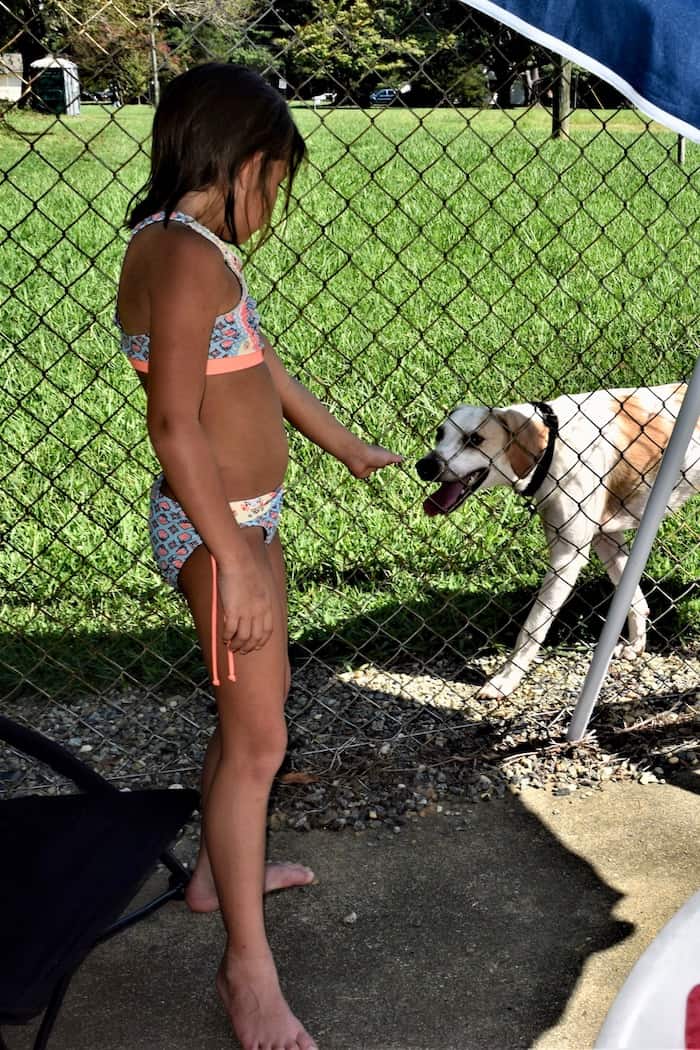
Rules For Children Meeting My Dog
- kids must give any food they’re holding to adults before greeting Honey
- stuffed animals and toys must also be held by adults
- no forced greetings
If a child approaches with ice cream or candy in her hand, we ask their parent to hold it until the greeting is over. Expecting Honey to greet a child without taking a deep sniff of their treats is asking a lot of her.
Almost as tempting to my pup is a stuffed animal or ball. Once again, if a child is holding one, we ask them to give it to their parent for safekeeping before greeting Honey.
Finally, the last rule has less to do with children and more to do with their parents. If a child shows any fear or reluctance to meet Honey, we excuse ourselves and walk away. Many toddlers are fascinated by animals and will make a big fuss over them. But they don’t necessarily want to get up close and personal—especially if they don’t have pets in their own home.
It’s amazing to see how many parents and grandparents will pull a reluctant child by the arm toward Honey insisting that they pet her. No. I don’t want to be the person responsible for someone developing a lifelong fear of dogs.
And Honey is just as happy being admired from afar.
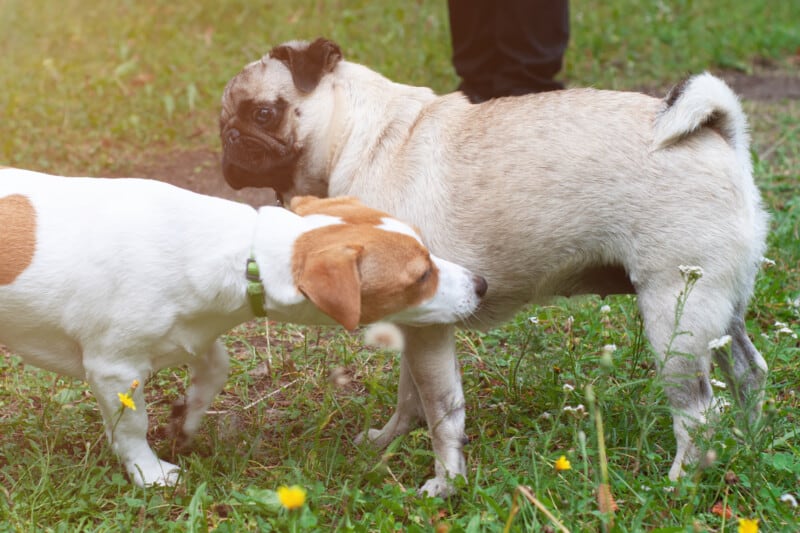
Introducing A Dog To Other Dogs
Perhaps the riskiest greetings with pets are between two dogs. Yeah, I know some people think every dog needs dog buddies. I disagree.
Like humans, Honey likes some dogs a lot and others not so much. We don’t insist that she meet every dog we pass. In fact, since on-leash greetings can be risky at worst and create a big tangle at best, I don’t call out to other dog people, “Does your dog want to say hi?”
Living on a boat, however, means we meet lots of other dogs. Apparently there is some kind of rule that requires at least 75% of boaters to have a dog. We once stayed in a marina where local people brought their dogs to swim. And one of the dock hands brought his dog to work with him. So Honey got to meet lots of new dogs.
With a few basic guidelines, most of our dog to dog greetings go well.
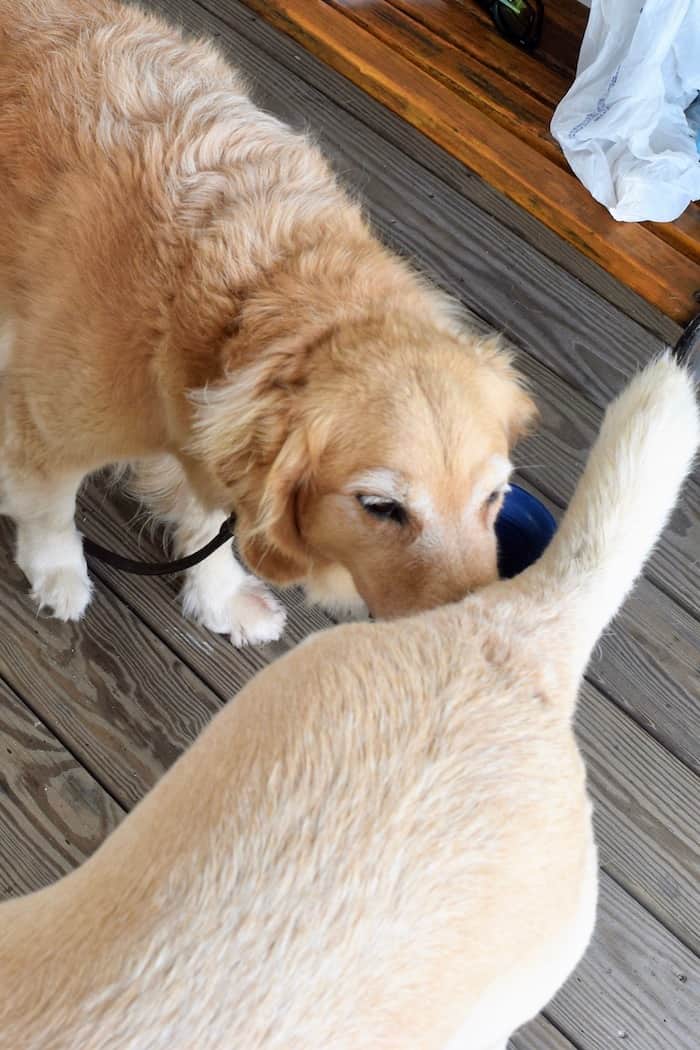
Rules For Introducing My Dog To Other Dogs
- little dogs get to make the first approach
- always encourage an approach from the side, not head on
- watch the body language of all dogs involved
- keep the leash loose so your dog can escape if they wish
- break things up at the first sign of discomfort
Like children, some small dogs fear big dogs (heck, some large dogs fear other dogs—so be kind to them). We’ve seen people pull their little dog over to Honey for a forced greeting. We discourage them or walk away whenever possible. But if a greeting is inevitable (as it may be on a crowded dock) we ask Honey to sit or lie still so the little dog can sniff her first.
Have you watched dogs greet each other off leash? They don’t normally choose to greet each other face to face. They’re more likely to sniff each other from the side. If you’re supervising an on-leash greeting, anything you can do to encourage an approach from the side will cause less stress.
Look for signs of discomfort in your or the other dog during a greeting—lip licking, a stiff upright tail, turning the head away, ducking behind your legs. At the first sign of discomfort, end the greeting and prepare to leave.
READ MORE ⇒ Traveling With A Reactive Dog
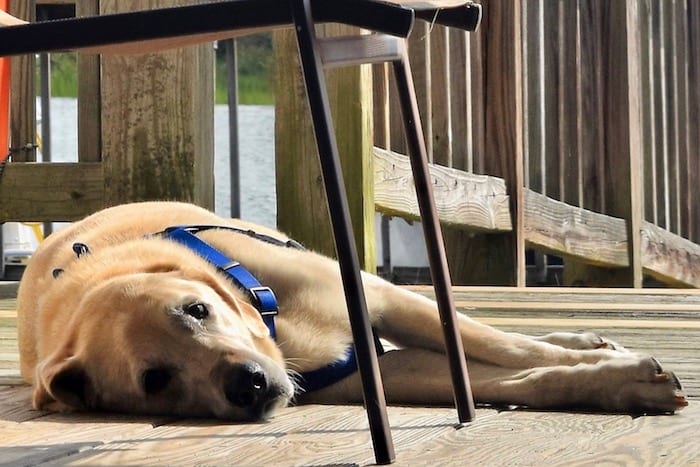
We’ve had issues with other dogs putting their heads over Honey’s shoulder (it’s often the first sign that humping is imminent), and Honey hates it. The instant we see a dog put his head over Honey’s shoulder, we call her away and prepare to leave.
But dogs aren’t the only pets Honey meets in her travels!
Introducing A Dog To Cats
As more cats take up adventuring, dog people will have more chances to supervise dog and cat greetings. Since many boats have traveling cats on board, we meet cats being walked on leashes on the docks fairly often.
Fortunately, Honey loves cats. But she loves them so much we have to keep her from getting too excited and intimidating a cat who wonders why Honey is arching her back (play bowing) at them.
READ MORE ⇒ How To Manage Greetings When Hiking With Cats
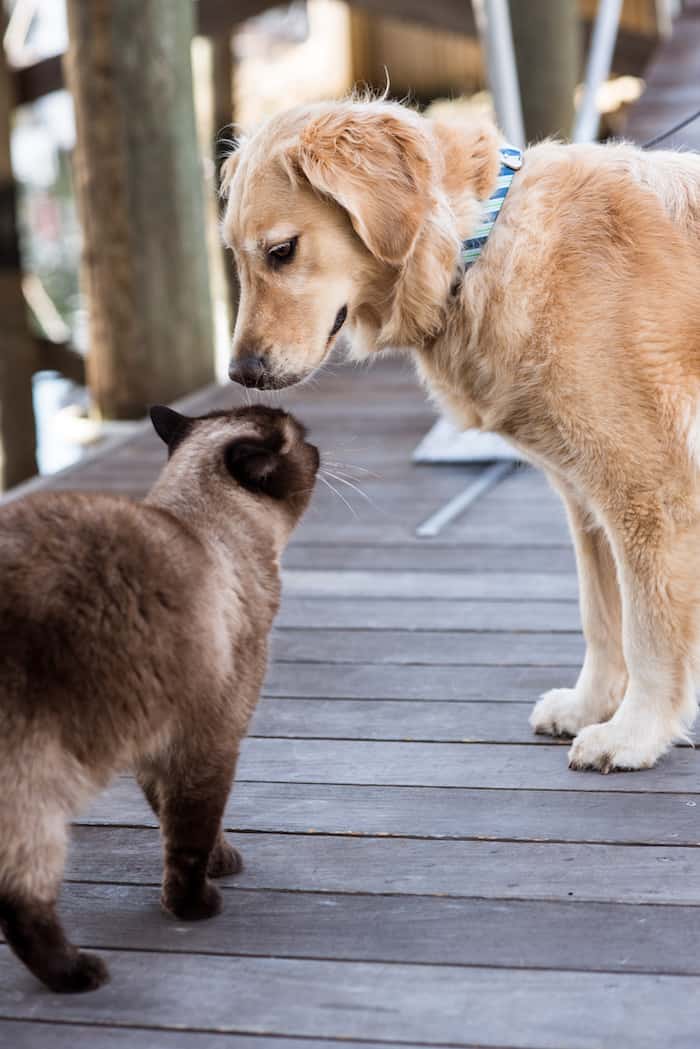
Like with small children and small dogs, cats get the first choice about whether to meet Honey or not. We ask her to sit quietly and allow the cat to approach in his own time.
If the cat looks comfortable, we’ll allow Honey to get up and sniff back. Because we’ve taught Honey to be calm around cats from the very beginning, we’ve enjoyed making new kitty friends.
Rules For Introducing My Dog To Cats
- cats get to decide if they want to approach first
- we stay away from cats showing no interest
- Honey must stay calm; even signs of playfulness can be threatening to some cats
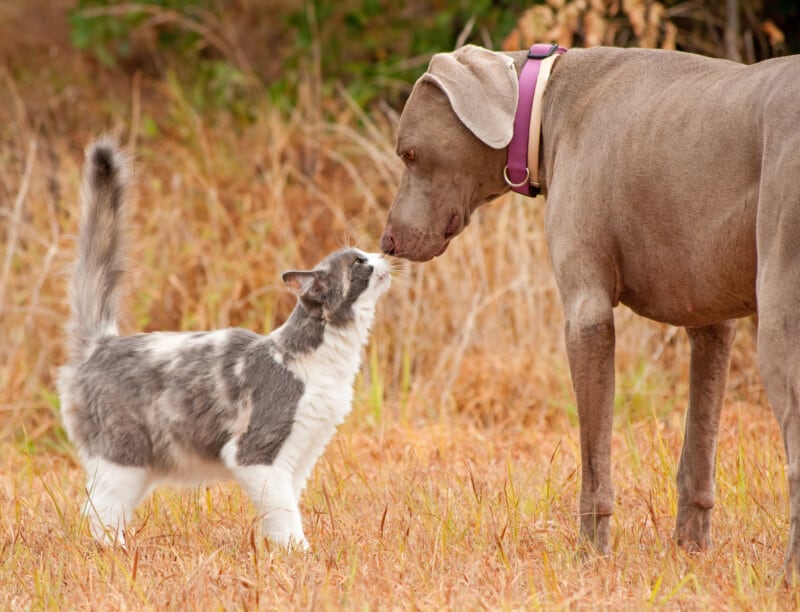
Why Manage Greetings With Your Pet
You might think I’m taking all of this a bit too seriously. After all, if someone wants to meet your dog, what’s the big deal? Just let them do it.
First of all, mismanaged greetings can turn bad quickly. We’ve seen enthusiastic dogs knock people over and fights start at dog parks. And the last thing we need is for Honey to get a cat scratch on her nose while we’re traveling and away from her vet.
Awkward greetings can also be a nuisance to us. Training Honey in advance and having our own guidelines makes us more comfortable.
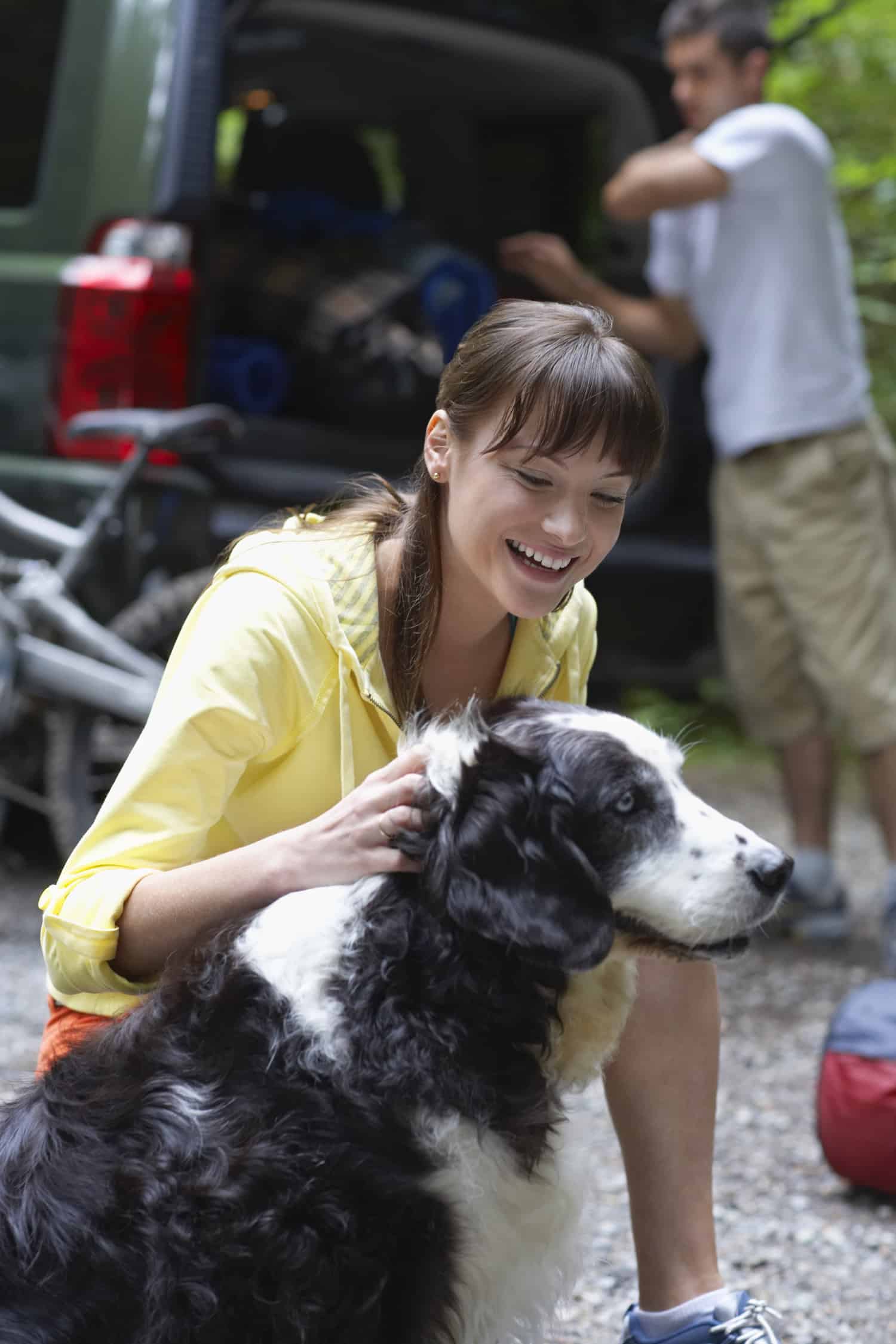
Recently we took Honey to a pet-friendly brewery. The dog-loving person sitting at the next table kept calling Honey to come over to visit. Fortunately, our food had already arrived and we had trained Honey to lie down to wait for a morsel. It was a poor time for a greeting and I was glad we had done our training in advance so we didn’t have to retrieve Honey from her new friend during dinner.
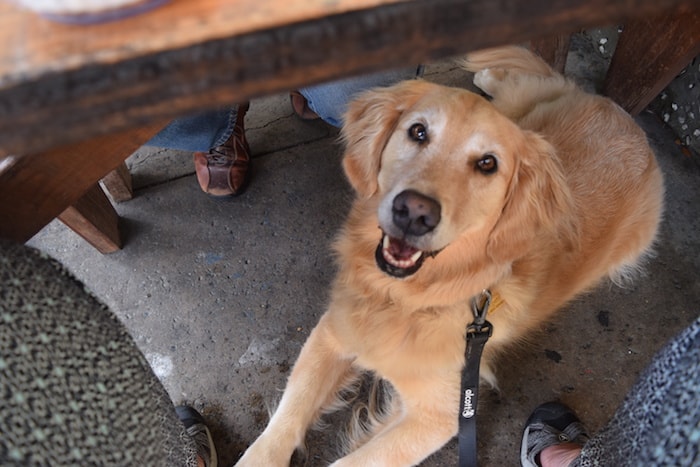
Finally, because we take Honey nearly everywhere with us, we’re very careful to be good pet travel ambassadors. We’d be terribly disappointed if a bad greeting got us kicked out of a restaurant or other setting. So sometimes the best greeting is no greeting at all.
And hopefully, if we visit again in the future, Honey will be invited back.
What’s the best part of managing greetings with pets while traveling? Making new friends and always being invited back! If you manage happy greetings with your pet while traveling, you’ll enjoy being invited back as well.
